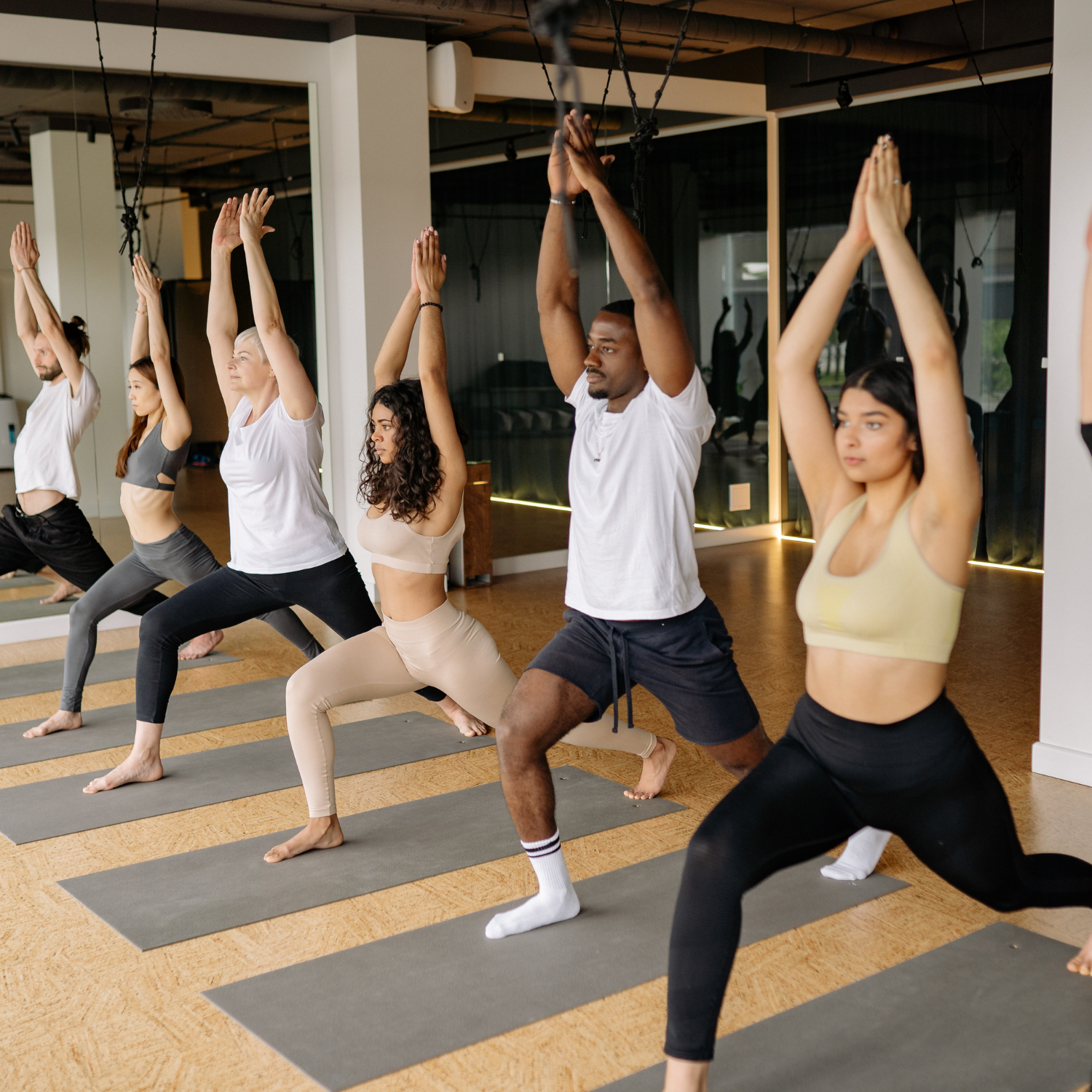Introduction to Yoga and Its Universal Appeal
Yoga, an ancient practice with roots tracing back to over 5,000 years in India, has evolved significantly over the millennia. Originally rooted in spiritual and philosophical traditions, yoga combines physical postures, breath control, meditation, and ethical principles. Its primary aim is to create a harmonious balance between the mind, body, and spirit. As the world became more interconnected, this age-old practice gained prominence across diverse cultures, evolving into a global phenomenon embraced by millions.
What sets yoga apart is its universal appeal. Unlike many fitness regimes that are often age-restricted or require a certain level of athleticism, yoga is inclusive, inviting practitioners of all ages, backgrounds, and fitness levels. From children developing focus and flexibility to seniors improving balance and mobility, yoga provides tools for enhancing physical health and mental well-being. Additionally, various styles such as Hatha, Vinyasa, and restorative yoga cater to different preferences and needs, making it accessible to diverse demographics.
The growing trend of incorporating yoga into daily routines reflects its increasing recognition as a holistic approach to health. Many individuals report feeling the benefits of yoga beyond just physical fitness; it also contributes to stress relief, improved concentration, and emotional resilience. Furthermore, the adaptability of yoga allows for modifications tailored to individual capabilities—offering seated poses for those with limited mobility and challenging asanas for more experienced practitioners. This versatility plays a crucial role in yoga’s widespread adoption as a means for maintaining both physical and mental wellness, making it a valuable addition to the daily habits of people around the globe.
Physical Benefits of Yoga for Children
Yoga offers numerous physical benefits for children that contribute to their overall development and well-being. One of the most significant advantages is improved flexibility. Participating in yoga classes encourages children to stretch and strengthen their muscles, enhancing their range of motion. This increased flexibility not only aids in physical activities and sports but also lowers the risk of injuries as they grow and engage in various physical endeavors.
In addition to flexibility, yoga plays a vital role in developing balance and coordination. Many yoga poses require children to maintain equilibrium, helping them build strength in their core and supporting muscles. As children practice these poses, they enhance their spatial awareness, which is crucial for activities such as running, jumping, and even everyday movements.
Furthermore, engaging in yoga instills healthy habits in children from an early age. As they learn the importance of mindful movement and breath control, they are likely to carry these practices into other areas of their lives. These skills can lead to a more active lifestyle, reducing the risk of sedentary behavior and associated health issues such as obesity.
Yoga also has a profound impact on concentration and mental clarity. Practicing yoga encourages children to focus on their breath and poses, which can enhance their attention span in both academic and recreational settings. This improved concentration is particularly beneficial during their formative years, as it aids in their cognitive development and academic performance. Additionally, yoga serves as an effective tool for reducing anxiety. The calming techniques taught in yoga can help children manage stress and emotional challenges, promoting a sense of peace and balance in their lives.
Yoga for Teenagers: A Tool for Stress Reduction
During the teenage years, individuals often encounter various stressors, including academic pressures, social challenges, and personal identity issues. Yoga emerges as an effective method for managing these stressors and promoting emotional stability among adolescents. The practice of yoga incorporates physical postures, breathing techniques, and mindfulness exercises, which collectively contribute to a sense of calm and enhanced self-awareness.
Engaging in yoga can significantly improve self-esteem and body image, addressing common concerns faced by teenagers. The physical aspect of yoga encourages a connection between the mind and body, allowing teenagers to develop a more positive perception of themselves. As they master different poses, they can experience a sense of accomplishment that reinforces their self-worth. Additionally, practicing yoga helps in cultivating a healthy body image, as it promotes acceptance and appreciation for one’s physical abilities rather than a focus on societal standards.
Moreover, yoga facilitates improved social relationships by enhancing communication and emotional regulation. Through shared yoga classes, teenagers can connect with peers in a supportive environment, fostering a sense of community. This interaction can lead to the development of deeper friendships, as students learn to empathize and collaborate effectively. The practice of mindfulness taught in yoga encourages teenagers to be more present and attentive, enhancing their interpersonal skills and emotional intelligence.
Furthermore, yoga equips adolescents with essential coping skills to navigate life’s challenges. By incorporating resilience-building techniques, such as breathing exercises and meditation, teenagers learn to manage their stress responses. The ability to pause, reflect, and center themselves during overwhelming situations is invaluable, granting them tools to address anxiety and emotional upheaval. In essence, yoga serves not only as a beneficial practice for maintaining physical health but also as a powerful tool for emotional and social enhancement for teenagers.
The Benefits of Yoga for Adults: Stress and Modern Life
In today’s fast-paced world, adults frequently experience stress and anxiety stemming from various responsibilities, including work commitments and family obligations. Yoga emerges as a holistic practice that provides essential physical and mental support to navigate these challenges. By incorporating yoga into daily routines, adults can cultivate a sense of balance and well-being, mitigating the impacts of modern life.
One of the key benefits of yoga for adults is improved posture. Many individuals spend long hours sitting at desks, which can lead to poor posture, back pain, and discomfort. Yoga encourages mindfulness of body alignment and promotes strength and flexibility through a series of poses designed to counteract the negative effects of sedentary lifestyles. As individuals engage in regular yoga practice, they often notice significant improvements in posture, ultimately enhancing their overall physical health.
Enhanced respiratory function is another critical advantage of yoga that benefits adults. Pranayama, or breath control techniques, is a fundamental aspect of yoga practice. These techniques help individuals develop deeper and more efficient breathing patterns. As practitioners become more aware of their breath, they often experience reduced stress levels and increased oxygen flow, which can lead to heightened concentration and mental clarity.
Furthermore, yoga provides relaxation techniques that are instrumental in combating anxiety. Through mindful movement and breath awareness, adults can achieve a state of relaxation that allows them to detach from daily pressures. Yoga facilitates the release of body tension and promotes mindfulness, making it an effective tool for emotional regulation. As a result, practitioners may find it easier to cope with stressors, leading to an overall enhancement in quality of life.
By incorporating these practices into their routines, adults can experience a profound transformation in their physical and mental well-being, reinforcing the significant role yoga plays in managing the stresses of contemporary living.
Yoga for Seniors: Promoting Mobility and Balance
As individuals age, maintaining mobility and balance becomes critical for fostering an independent and healthy lifestyle. Yoga serves as an exceptional practice for seniors to enhance their physical abilities while also benefiting their mental and emotional well-being. The gentle yet effective movements involved in yoga promote flexibility and strength, contributing to improved mobility in this age group. This is especially important considering that falls are a leading cause of injury among older adults.
Engaging in regular yoga practice allows seniors to incrementally enhance their strength and balance through specific poses that target core stability and lower body strength. Poses such as Tree Pose and Warrior II are designed to cultivate better balance, helping individuals develop the necessary muscle coordination to prevent falls. Moreover, yoga facilitates increased body awareness, encouraging seniors to understand their physical limits, thus reducing the likelihood of risky movements.
In addition to mobility and balance, yoga has notable effects on chronic pain management, a common concern for older adults. Through stretching and controlled breathing techniques, practitioners can experience relief from discomfort associated with arthritis, back pain, and other age-related ailments. This mindful engagement with the body not only alleviates physical discomfort but also promotes a sense of emotional stability.
Furthermore, yoga is beneficial for mental clarity, helping seniors maintain cognitive functions. The meditative elements of yoga, combined with physical activity, stimulate brain function, enhancing memory and focus. This dual benefit of promoting both physical and mental health makes yoga an ideal activity for seniors. Ultimately, the integration of yoga into daily routines can foster a holistic improvement in quality of life, reinforcing the importance of staying active and engaged in older age.
Yoga’s Emotional and Psychological Benefits Across Ages
Yoga offers a multitude of emotional and psychological benefits that resonate with individuals across various age groups. One of the primary advantages of incorporating yoga into one’s routine is the enhanced mindfulness it fosters. Mindfulness, characterized by the practice of being present and fully engaged without judgment, is a key component of yoga. It encourages individuals to connect with their thoughts and feelings, thereby increasing self-awareness and facilitating a deeper understanding of one’s emotional state. This heightened awareness often leads to improved emotional regulation, allowing practitioners to navigate life’s challenges more effectively.
Furthermore, numerous studies have illustrated the effectiveness of yoga in reducing symptoms of depression and anxiety. Engaging in regular yoga practice can lead to a considerable decline in stress levels, as it promotes relaxation and a sense of calm. The meditative aspects of yoga create a mental space that can alleviate feelings of sadness and anxiety, making it a valuable tool for individuals dealing with mood disorders or emotional distress. Additionally, the physical postures involved in yoga can stimulate the release of endorphins, which are known to enhance mood and wellness.
On a broader scope, yoga cultivates emotional resilience across age demographics. It empowers practitioners to respond to life’s adversities with a balanced perspective and a stronger coping mechanism. This resilience becomes crucial as individuals encounter various life transitions, ranging from adolescence to the elderly phase of life. Moreover, the practice of yoga promotes a positive outlook on life by fostering gratitude and compassion towards oneself and others. In conclusion, the emotional and psychological benefits of yoga extend far beyond physical fitness, serving as a holistic approach to enhance mental health and well-being for individuals of all ages.
Integrating Yoga into Family Life
Integrating yoga into family life can foster stronger bonds, encourage shared experiences, and instill healthy habits in children, while promoting both physical and emotional well-being for all family members. One effective strategy for incorporating yoga is to designate specific days and times for family yoga sessions. By creating a routine, families can look forward to these dedicated moments together, strengthening their relationship and encouraging participation from every member.
Parents can start by exploring yoga styles that are enjoyable for all ages, such as playful yoga or partner poses that engage children and allow them to express their creativity. Utilizing resources such as family-oriented yoga classes or online videos tailored for various age groups can also facilitate understanding and engagement. This ensures that yoga becomes a fun and inclusive activity for everyone in the family.
Creating a designated yoga space at home can further enhance the experience. A serene environment, complete with mats, cushions, and calming decor, allows family members to associate yoga with relaxation and comfort. This space can also serve as a daily reminder of the value of mindful movement and mindfulness, encouraging children to adopt healthy habits early on.
Moreover, families can incorporate yoga into everyday activities. For instance, practicing simple stretches before bedtime or engaging in breathing exercises during moments of stress can cultivate a culture of well-being. By discussing the benefits of yoga, such as improved focus and emotional regulation, parents can help children understand its importance.
Ultimately, integrating yoga into family life transcends physical practice; it becomes a holistic approach to nurturing relationships and emotional health. As families foster these habits together, they create a positive atmosphere that promotes overall wellness for all members, making yoga an invaluable, unifying practice that can be enjoyed for a lifetime.
Yoga Styles for Every Age Group
Yoga is a versatile practice that offers numerous styles tailored to meet the needs of individuals across varying age groups. Each group, from children to seniors, can benefit from specific yoga styles that cater to their physical capabilities and mental requirements. Exploring these diverse options can help practitioners find the practice that resonates most with them.
For children, a playful and engaging approach is essential. Children’s yoga classes often incorporate games, storytelling, and creative movements, aiming to cultivate concentration, flexibility, and body awareness. Styles such as Rainbow Yoga and Kids Yoga focus on fun while teaching essential skills for emotional regulation and social interaction. These classes help foster a love for movement in young practitioners while promoting mindfulness from an early age.
As adolescents grow into their teenage years, they may seek a more dynamic and energetic practice. Styles like Vinyasa and Power Yoga are particularly popular among teens, as they combine movement with breath in a way that can be both challenging and invigorating. These classes not only improve physical strength and flexibility but also provide an outlet for stress relief, which is especially important during this transitional stage of life.
For adults, Hatha and Iyengar Yoga serve as excellent options, emphasizing alignment, balance, and building strength over time. These styles provide a strong foundation for broader practices, making them suitable for individuals at various fitness levels. They can encourage body awareness and focus through mindful movements and controlled postures, allowing practitioners to connect with their bodies at a deeper level.
For seniors, gentle styles such as Restorative or Gentle Yoga provide a soothing environment, promoting relaxation and flexibility while reducing the risk of injury. These practices adapt poses to accommodate reduced mobility and are instrumental in enhancing overall health and well-being. Engaging in such mindful practices helps seniors maintain strength and balance, contributing to a better quality of life.
Getting Started with Yoga: Resources and Recommendations
If you are interested in embracing the practice of yoga, it is essential to approach it with the right resources and guidance, especially if you are a beginner. Today, numerous options are available for those looking to start their yoga journey. Local studios often offer introductory classes tailored to newcomers, providing an excellent environment to learn basic postures and techniques under the supervision of experienced instructors. Many of these classes also foster a sense of community, enhancing your motivation and commitment to the practice.
For those who prefer a more flexible schedule or cannot access local studios, online platforms such as Yoga International, Daily Burn, or even YouTube channels featuring certified instructors can serve as fantastic alternatives. These digital resources provide a wide variety of classes, ranging from gentle yoga for seniors to more rigorous styles like vinyasa or power yoga. This flexibility allows participants to find a practice that suits their needs, regardless of fitness level or age.
When beginning, it’s crucial to prioritize the basics. Beginners should focus on foundational poses, breathing techniques, and relaxation methods. Familiarizing yourself with terms like “asana” (posture) and “pranayama” (breathing control) can significantly enrich your understanding of yoga. Additionally, investing in a quality yoga mat and comfortable clothing will enhance your overall experience while ensuring safety and stability during your practice.
Many misconceptions surround yoga, such as the belief that it requires a high level of fitness or flexibility to start. On the contrary, yoga is accessible for individuals of all ages and abilities. It is a gradual journey where progress comes with consistent practice and an open mind. Remember, the goal is not perfection but rather self-discovery and personal growth. Embracing yoga as a lifelong practice can yield numerous physical, mental, and emotional benefits, making it a worthwhile endeavor for everyone.




